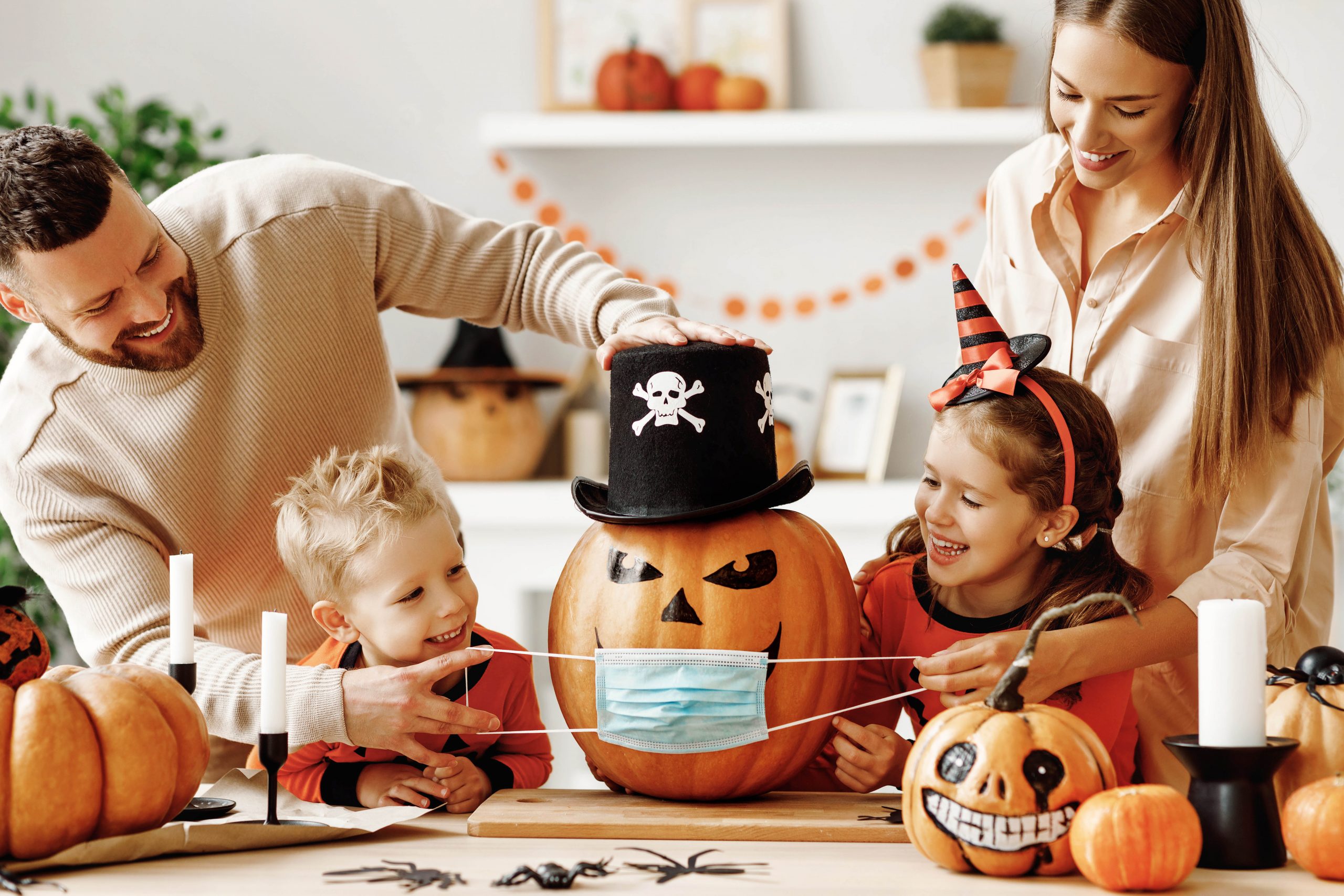Blog

11 safety tips to follow during Halloween
The apples have been bobbed, the pumpkins are carved, the cobwebs are hung, and the spooky movie marathon has been viewed, leading up to one of the most anticipated nights of the year for both kids and adults: Halloween.
But some Halloween statistics can be pretty frightening. According to SafeKids.org, only 1/3 of parents talk to their little goblins about Halloween, yet 3/4 of parents report having safety concerns. American Modern® has collected a trove of tips to keep kids of all ages safe this Halloween season.
1. Before you leave the house to go haunting, check your smoke detectors. With all of the neighborhood jack-o-lanterns aglow, and the occasional backyard fire-pits on Halloween night, it’s a good idea to double check that your smoke detectors are fully functioning.
2. Wear comfortable costumes that glow in the dark. Whether it’s a Ninja or Cinderella, fastening reflective tape onto costumes is an inexpensive and easy way to increase visibility during the night. It’s also great to put this same tape on trick-or-treat bags while you’re at it. Other handy items to carry include flashlights or glow sticks. The safest costumes are bright and reflective so you and your little ones will be more visible.
3. Make-up matters. Picking non-toxic make-up is important for you and your child’s safety. It’s always wise to do a small skin test in advance to ensure there is no irritation or allergic reactions. Put a small amount on the arm of the person who will be wearing it. If a rash, redness, swelling, or other signs of irritation develop where the makeup was applied, that’s a sign of a possible allergy. Additionally, you can quickly check the FDA’s list of color additives to see if the colors are FDA approved. If they aren’t approved for their intended use, don’t use them. That list can be checked here: https://www.fda.gov/forindustry/coloradditives/coloradditiveinventories/ucm115641.htm
4. Flame-fighting costumes. You never know if you’ll end up fireside making S’mores and telling ghost stories on Halloween. So, always make sure costumes say “flame resistant” on the label. Believe it or not, some clothing products are not flame resistant and sometimes will even have a “keep away from flames” warning. If you make your costume, flame-resistant fabrics such as polyester or nylon are a safer choice.
5. Choose your “weapons” wisely. It’s important to make sure any props or weapons that really sell the costume are soft and flexible, such as a cardboard sword. It’s easy for children to get excited about their character. So while they are flexing their imagination, make sure their props are safe and not harmful to others. It goes without saying, but be sure to keep these props (and your children) away from any candles or open fires.
6. Commit to the costume, but scrap the decorative or colored contact lenses. The FDA and several eye care professional groups, including the American Academy of Ophthalmology, and the American Association for Pediatric Ophthalmology and Strabismus, are discouraging the use of decorative or colored contact lenses this year. If bought and used without a valid prescription, or without the involvement of an eye care professional, or without appropriate follow-up care, the lenses can lead to significant risks of eye injuries, including blindness.
7. Handle candy with care. First, you want to pick a safe bag, tote, or plastic food container to collect treats in. Up-cycling containers at home can be a creative and environmentally friendly, but be sure what you are using did not previously contain any harmful toxins, household cleaning items, or any other possibly poisonous material. Also, both kids and adults should not eat candy until it has been inspected at home. No nibbling along the way! Avoid any candy that is homemade or looks like the packaging has been tampered with.
8. Street safety. Children should always be properly supervised outdoors by parents. It’s best for children to travel in groups with several parents, and stay on the sidewalk, even if the street seems quiet in terms of traffic. Remind your child of the basics: looking both ways before crossing (at corners with cross walks only), having a buddy to hold hands with while crossing the street, and not talking to strangers. It’s also smart to make sure your child has their phone number and address either memorized or in a safe place.
9. No lights, no treats. Houses that do not look like they are celebrating or participating in Halloween should be skipped.
10. In case of tricks, act fast. While the origins are mysterious, egging is a popular, but dreaded Halloween trick. Did you know that if a smashed egg is left too long on your house or car it could damage the paint? Quickly clean any egg residue off to avoid damage to painted surfaces. In addition, look out for others around you and notify your neighbors of any mischief-makers in order to keep your neighborhood safe.
11. COVID-19 safety. Unfortunately, Halloween activities can increase the risk of getting or spreading the COVID-19 virus. Follow these safety guidelines from the Centers For Disease Control and Prevention to protect your family and others from the virus.
As you and your little ones canvass the neighborhood for this year’s candy haul, crunching leaves beneath your feet, American Modern hopes these helpful tips and tricks will make this year’s Halloween safe and sweet.
*If you have any questions or someone you know has been exposed to a potentially harmful substance, you can call the American Association of Poison Control Centers immediately at (800) 222-1222. They are available to assist you 24 hours a day. In case of an emergency, call 911 immediately.
From all of us at American Modern, we wish you, and your family a safe and fun Halloween!
For informational purposes only and may not be applicable to all situations.







